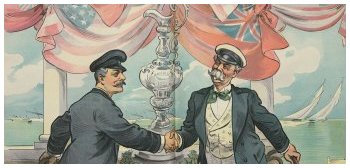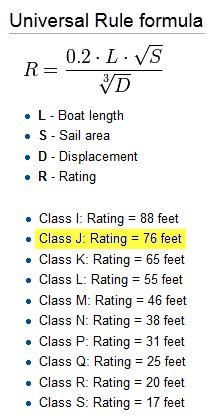Yves GARY Hits: 4885
Category: 1930 : CHALLENGE N°14
 On May 20, 1929, in the rooms of the Broad Street Club, the America's Cup Committee of the N.Y.Y.C. had met to discuss a challenge recently received from the Royal Ulster Yacht Club, acting on behalf of Sir Thomas J. Lipton for a series of races to be held in September, 1930, for The America's Cup. Sixteen years had passed since the receipt of the last challenge, nine since the last series of races, postponed for six years on account of the Great War.
On May 20, 1929, in the rooms of the Broad Street Club, the America's Cup Committee of the N.Y.Y.C. had met to discuss a challenge recently received from the Royal Ulster Yacht Club, acting on behalf of Sir Thomas J. Lipton for a series of races to be held in September, 1930, for The America's Cup. Sixteen years had passed since the receipt of the last challenge, nine since the last series of races, postponed for six years on account of the Great War.
Before the meeting adjourned the committee voted to accept the challenge after an agreement regarding the conditions of the match had been reached. No difficulty was anticipated in this respect, and a cable suggesting certain conditions was sent to the Royal Ulster Yacht Club. It was also decided to endeavor to form two syndicates, each to build one yacht for the defense of the Cup — one syndicate  to be formed by Vice-Commodore Aldrich, the other by Rear-Commodore Junius Morgan, and to welcome the forming of other syndicates to build at least one and, if possible, two or more yachts. Because of their light construction the committee decided to bar both Resolute and Vanitie, built to defend the Cup in 19 14, from consideration as cup-defense candidates. While these yachts were eligible under the Racing Rules (they had been constructed prior to the adoption by the Club of Lloyd's scantling rules), the committee deemed it for the best interests of the sport to bar them, as the Challenger would have to be of heavier construction to comply with Lloyd's rules. As a result of this action, the Challenger could suffer no handicap in respect to weight of hull construction.
to be formed by Vice-Commodore Aldrich, the other by Rear-Commodore Junius Morgan, and to welcome the forming of other syndicates to build at least one and, if possible, two or more yachts. Because of their light construction the committee decided to bar both Resolute and Vanitie, built to defend the Cup in 19 14, from consideration as cup-defense candidates. While these yachts were eligible under the Racing Rules (they had been constructed prior to the adoption by the Club of Lloyd's scantling rules), the committee deemed it for the best interests of the sport to bar them, as the Challenger would have to be of heavier construction to comply with Lloyd's rules. As a result of this action, the Challenger could suffer no handicap in respect to weight of hull construction.
The Cup Committee reported to the Club at its June meeting that an agreement governing the conditions of the 1930 races had been reached with the Royal Ulster Yacht Club, after the pleasantest possible negotiations between the two clubs, during the course of which every important suggestion made by either party had been promptly acceded to by the other.
 The principal changes from the conditions governing the last races for The America's Cup in 1920 were:
The principal changes from the conditions governing the last races for The America's Cup in 1920 were:
- the races be held off Newport, R. I., instead of off Sandy Hook;
- the match consist of four out of seven, instead of three out of five races;
- both yachts be built to rate at the top of the J class, eliminating time allowance;
- both yachts be Marconi rigged;
- the hulls be built in accordance with Lloyd's rules, thus insuring an equal strength of hull for both Challenger and Defender — one sufficiently strong to cross the ocean without damage or strain.
Following the making of this report the members of the America's Cup Committee who had become interested in the yacht-building syndicates resigned from the committee and two new members were appointed. Thereafter, the committee was composed of:
• Vice-Commodore W. Buder Duncan, Chairman
• Secretary George A. Cormack, Secretary
• Commodore E. Townsend Irvin
• Captain Joseph M. Macdonough
• Fleet Captain W. A. W. Stewart
